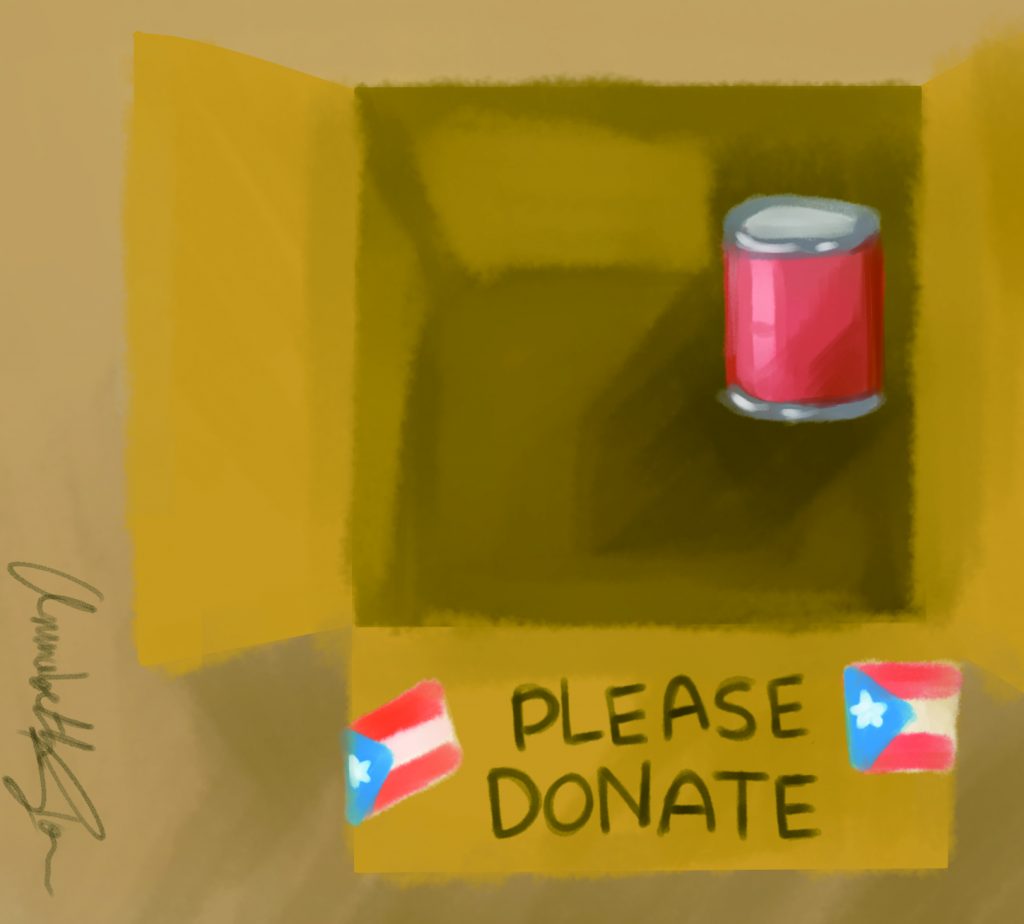
Since Hurricane Maria ravaged Puerto Rico on Sept. 20, 2017, the island has been making headlines for the devastation it suffered. Although it has been nearly four moths since the storm, full recovery remains a distant dream rather than a reality.
According to U.S Army officials, as of Jan. 11, 60 percent of the population has access to power and 95 percent of power restoration isn’t expected until March of this year. Also on Jan. 11, Puerto Rico’s Department of Justice was asked to investigate whether the island’s own government-run power company has been hoarding in warehouses materials that were intended to be used to restore electricity. The Environmental Protection Agency’s Jan. 5 update on the island’s water conditions says that 76,000 Puerto Ricans are relying on possibly contaminated drinking water. Many on the island are living by candlelight and struggling to rebuild after the hurricane wiped out so many of their homes, schools and businesses.
The rebuilding process has also been slowed down by pre-existing economic conditions, spurred by an ongoing recession that began in 2006. Over the last decade, more job opportunities increasingly located on the U.S. mainland have ushered in a mass exodus of Puerto Ricans, depleting the island’s workforce. Additionally, Section 936 of the tax code, which gave U.S. corporations an incentive to build subsidiaries on the island, was fully repealed in 2006. This meant a sharp decline in economic growth and the number of available jobs. Also, a crumbling health care system weakened by decreased federal Medicaid funding forced the island’s government to look elsewhere to pay for medical care. Seizing on this crisis, creditors began selling bonds to the island, which only provided temporary relief. Twelve years later, the island can’t pay back its bond debt and now owes over $74 billion, with no foreseeable solution. Schools and hospitals are among many government agencies forced to close as a result of these economic hardships.
Along with Puerto Rico’s internal turmoil, President Donald Trump was hesitant to acknowledge the dire situation at hand, initially attacking San Juan’s mayor and complaining on Twitter about how much the island’s debt is a nuisance for the United States. In addition, the Federal Emergency Management Agency’s (FEMA) resources have been put to the test in trying to balance emergency response and prolonged recovery. FEMA has been in the process of distributing tarps, food and water while hundreds are still living in shelters. It is helping rebuild homes, roads and infrastructure that have resulted in the agency allocating over $450 million to the local governments of the island’s 78 municipalities. That’s not to mention that FEMA also has to juggle the needs of the U.S. Virgin Islands, Texas, California and Florida as they try to rebuild from their own natural disasters. Having FEMA spread too thin, coupled with an ailing economic infrastructure, has caused the island to fight for whatever scraps of assistance it can get.
Ultimately, how Puerto Rico recovers is a result of how much Americans care to help. To care, Americans need first to be informed. Since Puerto Rico has been stuck in a stagnant situation for a few months, it no longer makes headlines like it once did. It’s unacceptable that these living conditions have been a reality for these Americans — yes, Puerto Ricans are Americans, something that 47.2 percent of Americans don’t know, according to a March 2017 poll conducted by Suffolk University and USA Today — for so long. The plight of these people still matters even though there aren’t as many camera crews present.
It’s time Puerto Rico receives the aid it needs, and there is an abundance of ways to help. Multiple fundraisers have been set up to collect monetary donations, such as the Hispanic Federation’s UNIDOS Disaster Relief and Recovery Program, the Unidos Por Puerto Rico (United for Puerto Rico) fund and the Alguien Ayúdenos (Somebody Help Us) fund. The Unidos Por Puerto Rico fund also accepts material donations and the most basic items — batteries, diapers, first-aid supplies, etc. — are most needed. Perishable foods and secondhand items generally will not be accepted. If money is tight and donating isn’t possible, keep talking about what the island is going through, stay educated and educate others. Social media is one of the best ways to spread information and to learn from those directly on the ground. Following news organizations like Univision Puerto Rico and Telenoticias Puerto Rico on Twitter is a great way to stay in the know.
If anything, this devastating hurricane demonstrates how greatly Puerto Rico has been failed by the U.S. government and by our fellow Americans. Every day is a day that Puerto Rico is rebuilding and with a little support from us all, the island can hopefully move on from this tragedy sooner rather than later.
Gabriella Trinidad is a sophomore majoring in English


